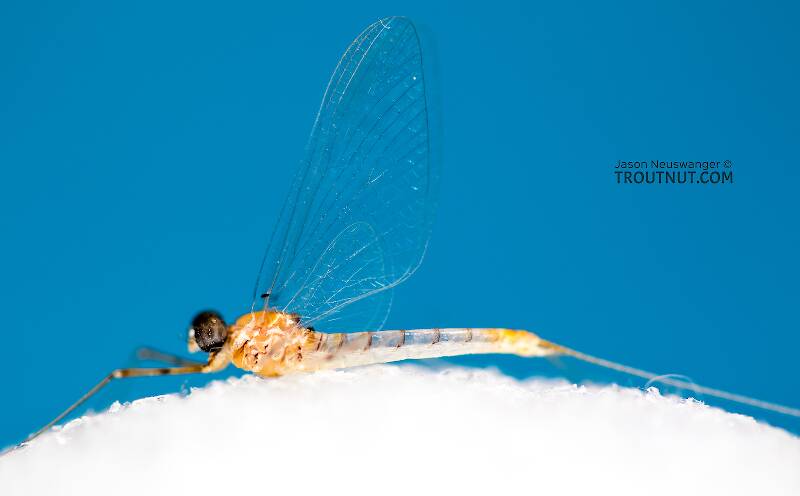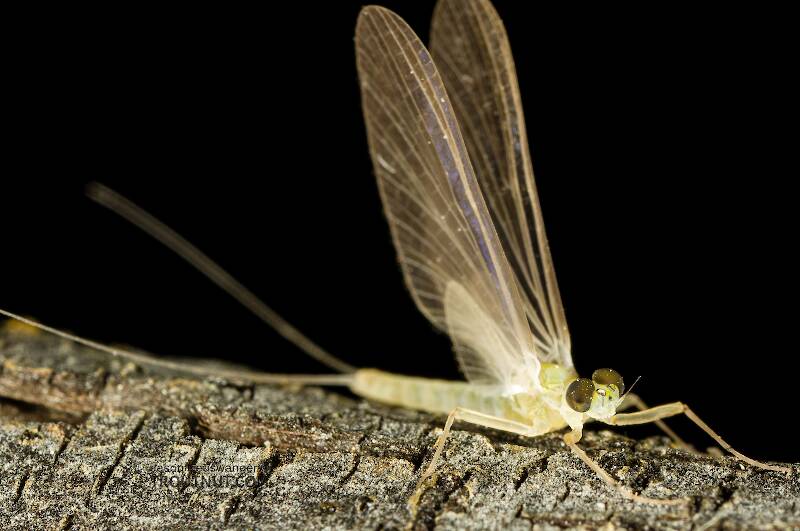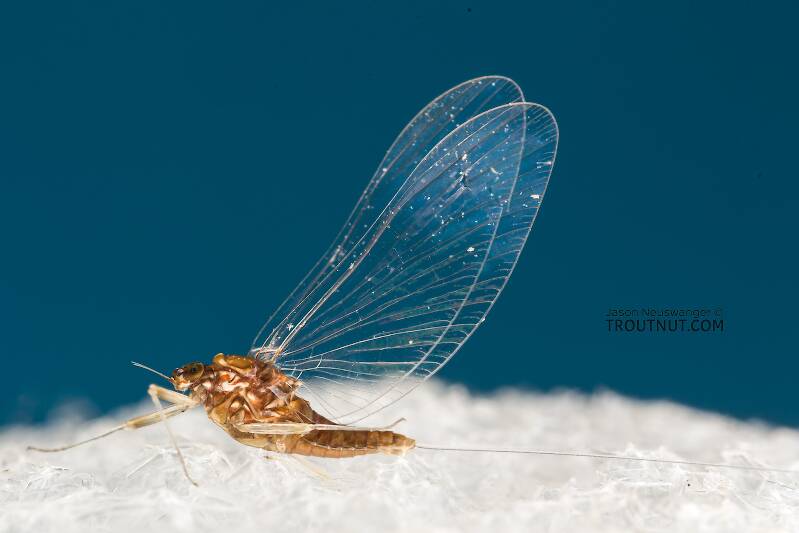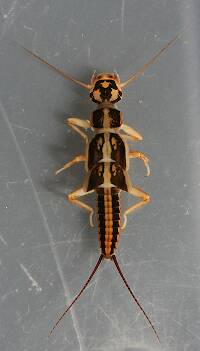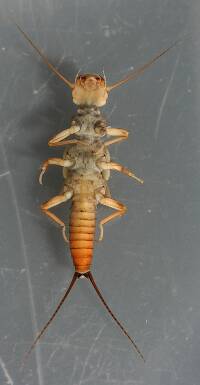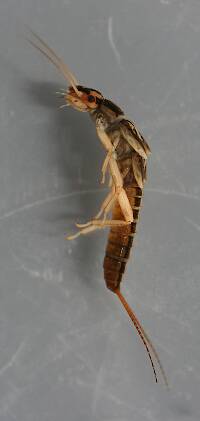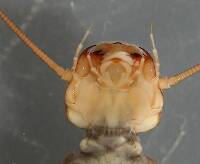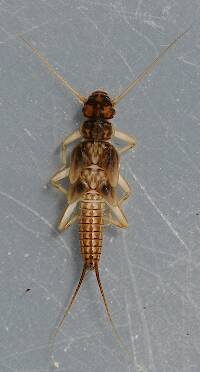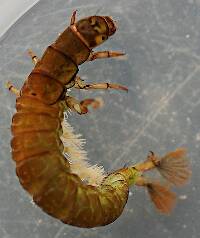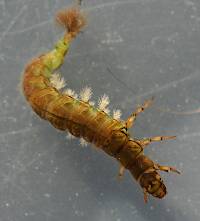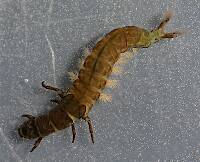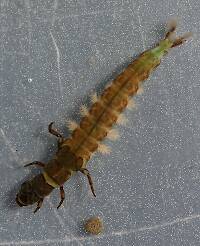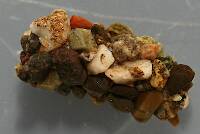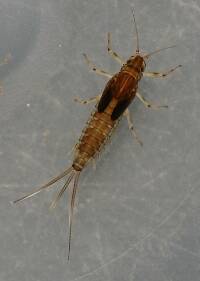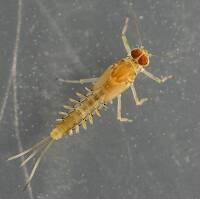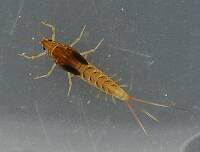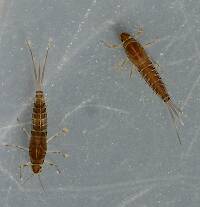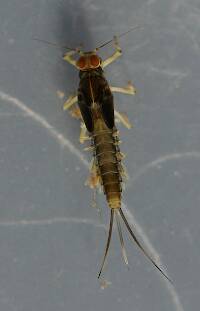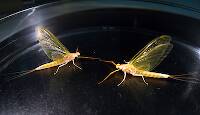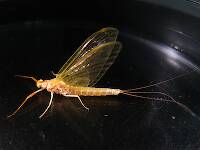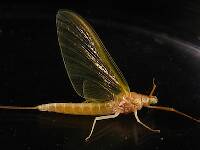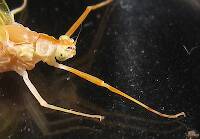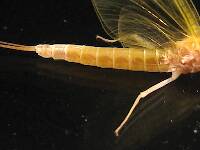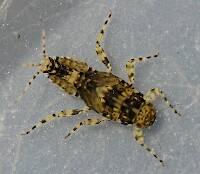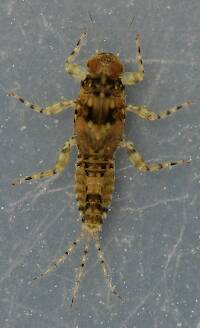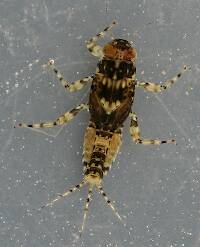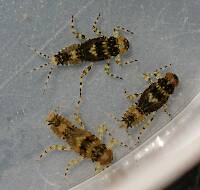
Salmonflies
Pteronarcys californica
The giant Salmonflies of the Western mountains are legendary for their proclivity to elicit consistent dry-fly action and ferocious strikes.
Featured on the forum

This one seems to tentatively key to Holocentropus, although I can't make out the anal spines in Couplet 7 of the Key to Genera of Polycentropodidae Larvae nor the dark bands in Couplet 4 of the Key to Genera of Polycentropodidae Larvae, making me wonder if I went wrong somewhere in keying it out. I don't see where that could have happened, though. It might also be that it's a very immature larva and doesn't possess all the identifying characteristics in the key yet. If Holocentropus is correct, then Holocentropus flavus and Holocentropus interruptus are the two likely possibilities based on range, but I was not able to find a description of their larvae.

Troutnut is a project started in 2003 by salmonid ecologist Jason "Troutnut" Neuswanger to help anglers and
fly tyers unabashedly embrace the entomological side of the sport. Learn more about Troutnut or
support the project for an enhanced experience here.
This topic is about the Insect Order Ephemeroptera
Mayflies may be the most important insects for trout anglers to understand. They are an ancient order of insects, famous outside the fly-fishing world for their fragile beauty and short adult lifespan, often a single day to mate and die. The mayfly's poignant drama attracts poets and anglers alike, but anglers make the most of it.Mayflies live more than 99% of their lives as nymphs on the river or lake bottom, filling many crucial roles in freshwater ecosystems as they feed and grow. They eventually emerge from the water as winged sub-adults called "subimagos" by scientists and "duns" by anglers. Duns evolved to be good at escaping the water, with a hydrophobic surface and hardy build, but they are clumsy fliers. Within a day or two they molt one last time into "imagos" or "spinners," the mature adults, a transformation captured in this photo series of a dun molting into a spinner. They have longer legs and tails, and sleeker, more lightweight bodies, giving them the airborne speed, agility, and long grasp they need for their midair mating rituals. They are usually darker than the duns and have shinier, more transparent wings. They die within minutes or hours after mating.
Example specimens
CheddarDan
Posts: 1
Posts: 1
CheddarDan on Apr 6, 2010April 6th, 2010, 6:32 am EDT
What is this; some sort of Diptera? The Trout seemed to love it! The one in the photo may have actually had darker wings. It was about a size 28, but others were larger.
http://web.utk.edu/~freeman/Hiwassee.html
Thanks in advance for any more info!
best
CD
http://web.utk.edu/~freeman/Hiwassee.html
Thanks in advance for any more info!
best
CD
GONZO on Apr 6, 2010April 6th, 2010, 7:12 am EDT
...some sort of Diptera?
Yes, it's a midge (Chironomidae).
Quick Reply
Related Discussions
Topic
Replies
Last Reply
17
Nov 22, 2014
by Millcreek
by Millcreek
21
Feb 19, 2013
by Gutcutter
by Gutcutter
14
Jun 15, 2012
by Entoman
by Entoman
0
Sep 23, 2006
by Litobrancha
by Litobrancha
2
Nov 12, 2012
by Entoman
by Entoman


